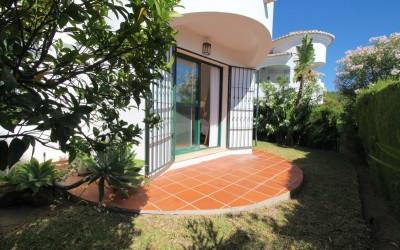
One of the most important things to understand when you move to any new country is how you will get around. Luckily that doesn’t have to be a problem when you move to Spain, where there are a myriad of different public transport links available to you. In fact, the public transport in Spain is considered to be amongst the best in Europe! That means that there’s no need to secure a car when you’re living in Spain, which will save you both time and money. To help make getting around even easier, here’s our comprehensive guide to getting around on public transport in Spain:
Using the Metro in Spain
The underground transportation system in Spain in known as the Metro, and there are metro systems in several Spanish cities, including: Madrid, Barcelona, Bilbao, Malaga, Seville and Valencia. When you buy a metro ticket in each of these cities, that same ticket will usually also allow travel on alternative modes of public transport such as the bus or suburban railway too.
As with the underground systems in most European cities, the main advantage of using the metro in Spain is that you can get around the city quickly and efficiently, avoiding the traffic above the ground. It is worth noting, though, that rush hour on the Metro can be very crowded. The good news is that the Metro is considered to be very safe: crime is rare, although pickpockets are occasionally reported on the Madrid network.
Here is a brief breakdown of how to use the metro city in each major Spanish city:
Using the Metro in Madrid – The metro in Madrid is both the oldest and the largest in Spain, comprising of 13 lines which are spread over 300 stations and is used by approximately 3 million people every day. The metro in Madrid operates between the hours of 6am until 1.30am.
Selected lines are 1.50 euros per journey, but the vast majority of lines on the Madrid Metro cost 2 euros per journey. If you will be using the metro regularly then you can buy a ten journey ticket for 18.30 euros. This can be used across all of the stations in the Metro Network and Metro Ligero: ML1, ML2 and ML3, which may also include access to bus travel (but you should check this locally).
If you are a young person under the age of 23,a commuter, or a pensioner over the age of 65, then you are eligible for a 30 day ticket or an annual season ticket. These tickets offer exceptionally good value if you will be travelling on the metro regularly, because you will have access to unlimited transportation. If you’re new to using the Metro in Madrid then a A free map (plano del metro) is available showing the lines in different colours. You can collect this from any of the metro’s ticket offices. Even if you aren’t used to using a Metro system, you’ll be amazed at just how easy it is to use the metro in Madrid. simply note the end station of the line you want and follow the signs. Although there is no published time table for the trains, they run every 5-8 minutes, meaning that you’ll never be waiting long to get where you need to go.
You can find out more about using the Metro in Madrid by calling 902 444 403 between the hours of 7am to 11pm or by visiting their website.
Using the Metro in Barcelona – The metro system in Barcelona is very slightly smaller than the system in Madrid, but it is also considerably more modern, and it is considered to be the best designed metro system in Europe. The system comprises of 12 lines which are named simply from L1 to L12. During peak periods the trains run between every 3-4 minutes, and unlike so many other metro systems in Europe this one is air conditioned. There’s even music piped onto the train platform to keep you entertained whilst you’re waiting.
A simple single journey ticket will cost 2.20 euros whilst a ten journey ticket will cost 10.20 euros provided you are travelling within a single zone. These same tickets can also be used on the city’s buses and can be used on the blue tramway (Tibidabo), the Montjuic funicular railway and Catalan railways Generalitat (FFCC) city lines. If you are planning to make more than just one or two journeys then a season ticket might be a better option for you: there are a host of different options available. The T-mes pass is valid for a month’s unlimited travel (and costs €54 for one zone), whilst the T-70/30 is valid for up to 70 journeys and transferable and the T-joven is valid for 90 days’ unlimited travel, but is only suitable for those under 25. One, two, three, four and five-day passes are also available and you can buy these from either automatic ticket machines, ticket offices and from other authorised sales outlets. The metro is open from 5am on Monday to Saturday (it opens at 6am on Sundays) and closes at midnight from Mondays to Thursdays, on Sundays and public holidays, and at 2am on Fridays, Saturdays and the day before public holidays.
Using the Metro in Bilbao – Bilbao has a relatively new and modern metro system which was completed in 1995 and designed by Sir Norman Foster. Although not as large as the metro systems in other, larger Spanish cities (in fact, it offers just two metro lines) the Bilbao metro system enables convenient transportation across the city. Depending on the zone you are travelling to, a ticket will cost either 1.50 euros or 1.75 euros, or you can opt to buy a day ticket for 4.60 euros instead. Trains run from 6am to 11pm on weekdays, until 2am on Friday and all night on a Saturday. Visit the official website to find out more.
Using the Metro in Valencia – Valenicia's metro system consists of 9 lines which reach, like a spiders web, across the city. The network was first opened in 1988 and ticket prices depend on how many zones you will be travelling across. Trains run from 5am to midnight each night and tickets cost €1.50 for single zones (A, B, C, D) or €2.90 return. For single tickets covering multiple zones, the price ranges from €2.10 to €3.90 a ticket. A 10-journey travel card costs €7.20 for a single zone, and further discounts and passes are also available.
Using the Bus in Spain
If you’re staying in a town or city that doesn’t have a metro system then you’ll be pleased to know that Spain offers excellent bus services and long-distance coach services in almost every region. Buses are the cheapest and most common form of public transport in Spain and most coastal towns and rural villages are accessible only by bus. Pot luck will determine whether you get a sleek and modern bus or a more ramshackle model, but either way what you will get is an affordable and reliable way to get from A to B.
Before boarding a bus at a bus terminal we would recommend that you buy a ticket from the closest ticket office or automatic machine. If you don’t then you may be able to buy a single ticket from the driver as you board, but you will almost certainly have to pay more for this privilege. You will usually enter the bus from the front door (next to the driver) and leave the bus from either the side or back door, however this can vary from service provider to service provider: there are buttons located throughout the bus for you to press when you wish to disembark.
Bus times will vary from city to city, but as a general rule you can expect bus services to run between the hours of 6am and either 11pm or midnight. (After midnight, some cities will then operate a night bus service). In smaller rural towns and villages, bus services can be slow and often don’t adhere to the published timetables, but they still provide a great way to get around and at a very low cost. Small towns can often be reached only via their provincial capital, and in the centre of Spain it’s difficult to get from one major city to another without going via Madrid. Local bus timetables may be published in free newspapers and magazines, or online.
Using International Buses – international buses are usually the most affordable way to travel across Europe from Spain. For example, Eurolines runs coach services from some 10 European countries to many destinations in Spain, including many connections from Britain. Journeys are very long, eg. from London it’s 26 hours to Barcelona and 28 hours to Madrid, so it is worth considering whether the inconvenience of this is worth the slightly reduced cost to you. If you enjoy travelling by bus then the coaches that are used for international journeys are generally comfortable, air conditioned, and have a toilet on board. Discounts are provided for students and youths on some routes, making it an attractive way to travel across Europe for cash-poor young people.
Using the Trams and Trains in Spain
Trams used to be incredibly popular in Spain, but most cities have lost their tram services in recent years. Some cities, however, have bucked this trend. Valencia, for example, reintroduced air conditioned trams in 1994 after an absence of 20 years. Barcelona now has a ‘Combino’ tramline running through the centre of the city and in 2002 Bilbao reintroduced trams too. According to recent news reports, Malaga and Zaragossa are also thinking of reintroducing trams so it could well be that in the future tram transport becomes a new focus for Spain.
And as for trains? Spain has an extensive high-speed AVE train network, with routes connecting much of the country. If you’re trying to travel from one major city to another then train will almost always be the fastest and most convenient way to travel. State operated company Renfe owns the majority of train lines in Spain, and also offers international services connecting Spain with France and Portugal. Booking your train tickets in advance is the best way to secure the most competitive price for you journey. You can book tickets easily by using the Trainline app.
Are you thinking of moving to Spain? Whether you will be buying a car or using public transport, why not let us find the perfect home for you? Our local property experts are ready to help: give them a call today.

 English
English Español
Español Deutsch
Deutsch Français
Français Svenska
Svenska Nederlands
Nederlands Italiano
Italiano Norsk
Norsk Русский
Русский

































